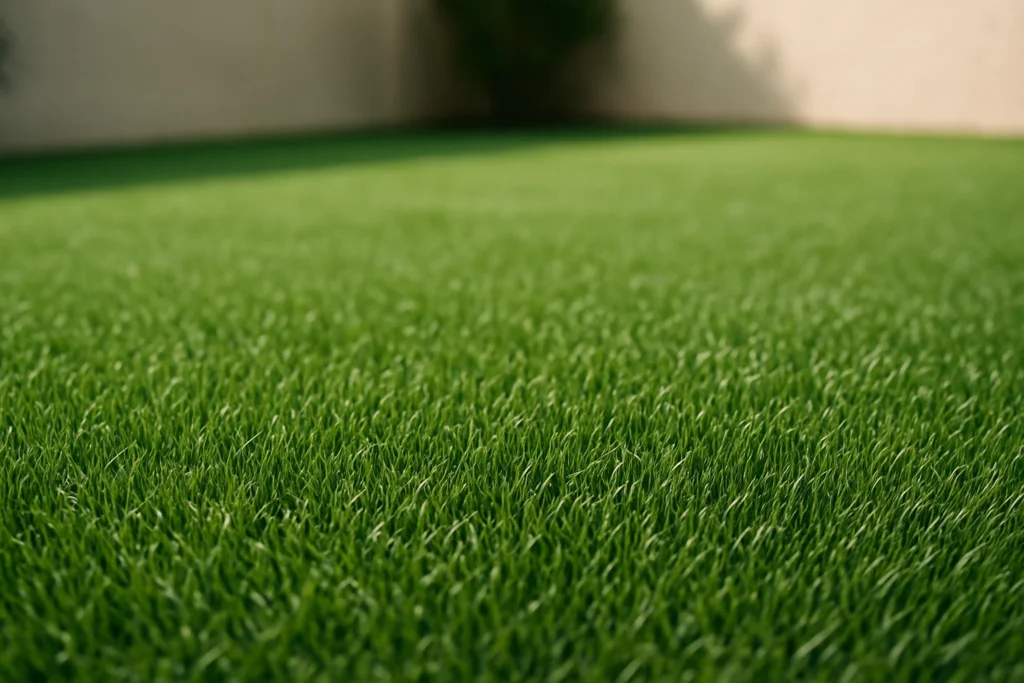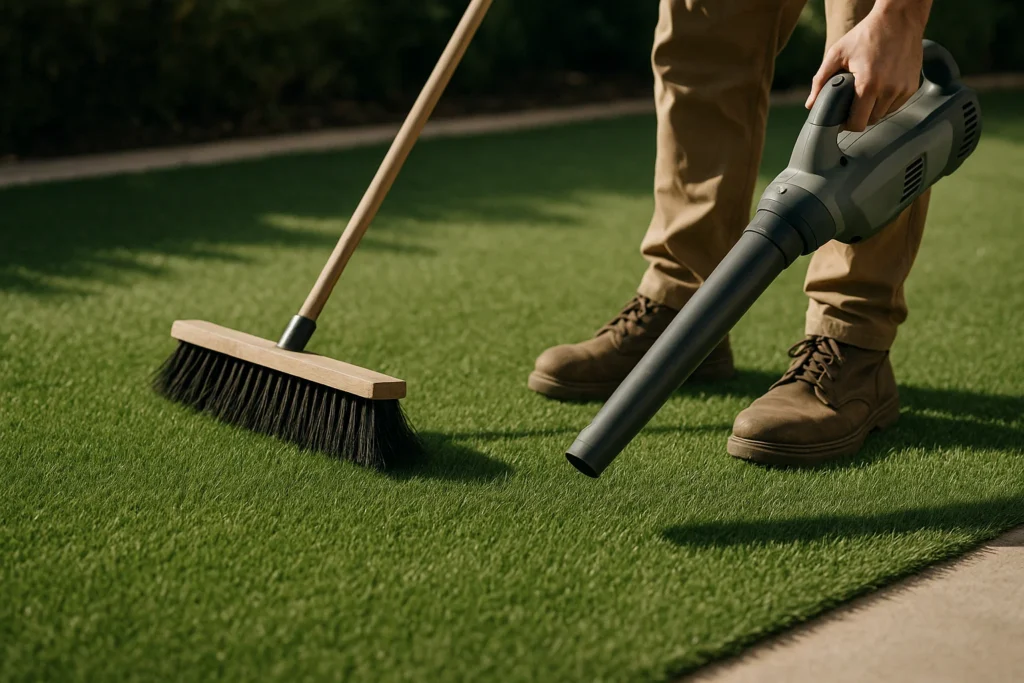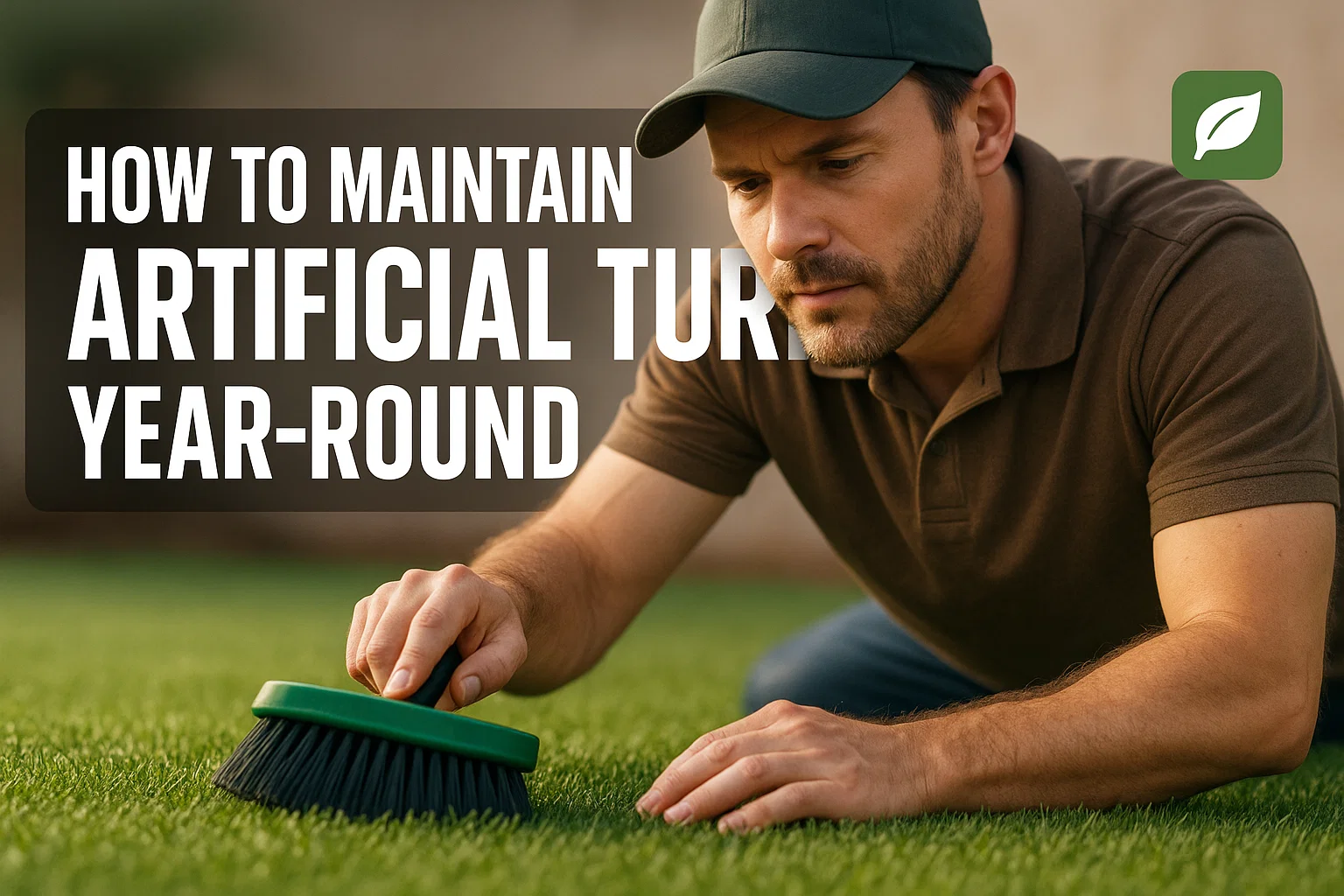Artificial grass has skyrocketed in popularity for homes, sports fields, and commercial zones. Why? It’s a wonderful compromise for the people who love the look of a green lawn, but who can’t keep up with all of the mowing. But here’s the catch: to maintain that artificial grass looking great and working great for years, you must still show it some love. This post is going to tell you the ins and outs of maintaining your fake grass throughout the year, as well as some quick tips and savvy maintenance strategies for you to take advantage of.
Why Proper Artificial Turf Maintenance Matters
Okay, so artificial grass is for sure less work than a normal lawn. You’re avoiding the mowing, fertilizing and limitless irrigation. But “low maintenance” is not the same as “no maintenance.”To keep your lawn clean and hygienic, regular care is a necessity. Left to its own devices, dirt, leaves, pet waste and even algae can build up. Maintaining it correctly will not only protect your investment but will keep your outdoor space looking sharp.
Regular artificial turf maintenance ensures:
- A clean and appealing lawn
- Bacteria cannot grow and not smell
- Flushable wipes ensure they are easy and convenient to use.
- Protection against wear and tear
- Longer turf life – typically 15-20+ years
- Pets and family members’ safety and comfort
How to Clean Artificial Grass

Not only does it look unsightly, it’s unhygienic too, so it’s in your best interest to keep artificial grass clean. Routine cleaning eliminates dirt, debris and pet waste to keep your lawn looking and smelling clean and inviting.
Routine Cleaning
- Clear debris: Keep leaves, twigs and dirt at bay with a leaf blower, broom or plastic rake as needed. This eliminates buildup, which can damage synthetic fibers.
- Brush synthetic grass: Using a stiff bristled broom or a brush specifically designed for turf. Brushing will encourage upright fibers and deter matting (especially in high traffic areas). Work against the grain for the best results.
- Hose down: Spray your grass with water to remove dust, pollen and light dirt. This easy action really does keep the turf fresh.
Deep Cleaning
Pet waste cleanup: Clean away solid waste immediately and rinse with water. Neutralize odors and eliminate bacteria with an enzyme cleaner meant for synthetic turf.
Stain removal: Don’t treat with chemicals (including soap) after a spill (such as food or a spill from a drink), just gently clean first with mild soap and water. Stay away from strong chemicals that can harm the turf backing and fibers.
Algae/moss control: Algae or moss can grow on the roof in wet climates. Apply turf-safe moss and algae treatments to keep the growth at bay.
Weekly and Monthly Artificial Grass Maintenance
Regular maintenance will keep your synthetic lawn looking good for years to come. Weekly and monthly to do’s prevent ant buildup, matting, and wear and tear.
| Task Category | Weekly Maintenance | Monthly Maintenance |
| Cleaning & Debris | Remove leaves, twigs, and large debris (blower/rake). | Thoroughly rinse entire turf to wash away dirt. |
| Pet Areas | Promptly remove waste; rinse urine spots with water. | Use enzymatic cleaner for odor control in pet areas. |
| Fiber & Infill | (Spot-brushing if needed) | Brush fibers with stiff broom to keep them upright and redistribute infill. |
| Weed Control | (Spot-check for visible weeds) | Check edges/seams for weeds; remove or treat. |
| Drainage/Inspection | Lightly rinse; check for proper drainage. | Inspect turf for any issues; ensure good drainage. |
Artificial Turf Maintenance Tips

A few easy maintenance tips for your artifical turf will make all the difference in extending the life of your product. These are some down-to-earth steps that help in keeping your investment safe without much ado.
Regular Brushing
Brushing your turf a few times a month will help to keep fibers standing up and avoid clumping. It also helps distribute infill materials, such as sand or rubber pebbles, that add support to the turf and increase drainage.
Check and Replenish Infill
Infill protects the backing and fibers of the artificial turf, as well as offering a cushion. Infill tends to compact or be washed away over time. Check your lawn every year and put infill as necessary for good grass performance.
Prevent Weed Growth
Artificial/substitute turf also makes for fewer weeds, although you may have to pull some from the edges or seams. A weed killer formulated for artificial grass, or hand weeding, will stop the damage.
Avoid sharp objects and heavy loads
Do not move heavy furniture or sharp objects over your turf to avoid tearing and flattening fibers. Place protective pads under heavy furniture as needed.
Protect from Heat and Fire
Synthetic grass will become damaged if exposed to intense heat or open flames. Do not set grills, fireplaces or hot appliances directly on your synthetic turf.
Seasonal Care for Artificial Turf
Customize your maintenance schedule with the changing seasons to protect your synthetic turf from the harsh effects of weather all year long.
Spring and Summer
- Brush more for high foot traffic.
- Wash turf often to remove any pollen and dust.
- Check for no more algae or moss growing on it.
Fall
- Clearing fallen leaves and detritus right away.
- Check the edges and corners of the turf for any damage following a storm or heavy winds.
Winter
- Gently remove snow from the surface with a plastic shovel or broom.
- Note: if using a shovel, do not use a metal one as it can damage the fibers.
- Let snow and ice melt on its own; don’t use salt or chemical de-icers.
FAQs
No, you don’t need to mow artificial grass. But with regular brushing the appearance and feel of natural grass can be maintained.
A standard routine of brushing, washing, and infill replacement leaves fibers standing tall and lush, emulating real grass.
Artificial grass can last at least 15 to 20 years or even more if properly maintained. The life of turf is affected by its construction, installation, use, and maintenance. Regular maintenance is the secret to getting the most out of your investment.
Gentle rinsing with a hose is advised. High-pressure cleaning the grass could damage the turf backing and fibers.
Clean solids immediately and rinse. Neutralize odors with enzyme-based cleaners formulated for use on artificial turf.
Maintenance costs are relatively low when compared to natural grass, as maintenance products are typically limited to simple cleaning and infill replacement.
Conclusion
Caring for your synthetic grass all year round is simple if you follow a few easy steps. Keeping infill maintained through regular cleaning, brushing and checking will keep your turf fresh and looking good. Proper maintenance handled differently depending on the season can also prevent problems like settling, bad odors and weeds. your fake grass will stay green and beautiful with minimal effort.month.


